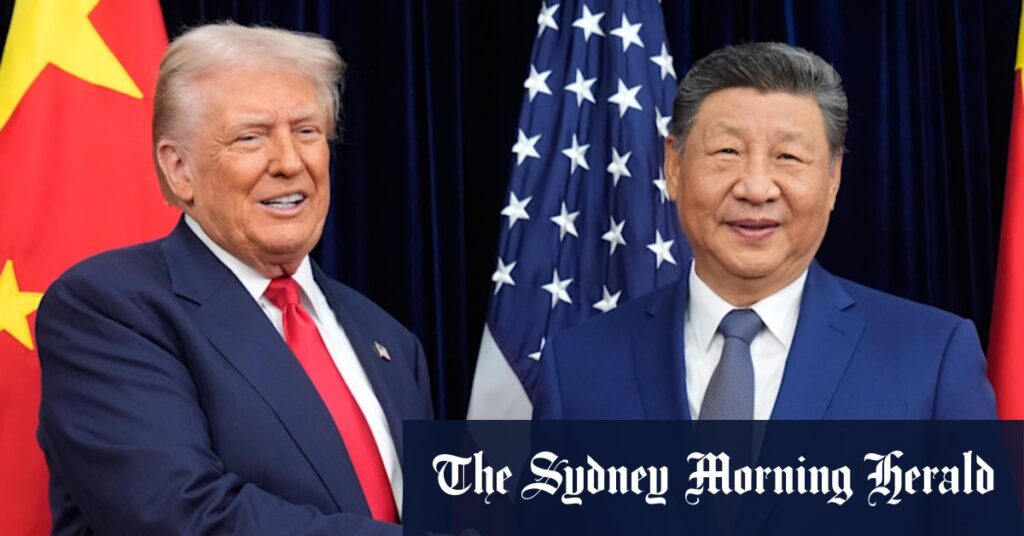
Busan, South Korea: In a significant diplomatic breakthrough, US President Donald Trump announced a landmark trade agreement with Chinese President Xi Jinping following an “amazing” meeting in South Korea. The agreement aims to de-escalate trade tensions and resolve key issues such as China’s rare earth export controls and US tariffs on Chinese goods.
The meeting, which took place at a military airbase in Busan, marked the first face-to-face encounter between the two leaders since 2019. Trump described the discussions as an “outstanding group of decisions,” highlighting the importance of the US-China relationship. The deal includes China’s commitment to resume soybean purchases and the US agreeing to reduce fentanyl-related tariffs on Chinese goods from 20% to 10%, effectively lowering the overall tariff rate from 57% to 47%.
Details of the Trade Agreement
The terms of the agreement reflect a framework previously outlined in Malaysia by US and Chinese officials. A critical component is China’s decision to defer its expanded export controls on rare earths, which are vital for global high-tech manufacturing. In exchange, the US will not implement the additional 100% tariffs on Chinese goods that were scheduled for November 1.
Xi Jinping, who remains in South Korea for the Asia-Pacific Economic Cooperation (APEC) summit, emphasized the need to avoid a “vicious cycle of retaliation.” Chinese state media agency Xinhua reported that both sides also agreed to extend a tariff truce for another year and reached consensus on issues such as anti-drug cooperation on fentanyl and expanding agricultural trade.
Implications for Global Trade
The agreement signals a potential thaw in US-China relations, which have been strained by trade disputes and geopolitical tensions. Experts suggest that the deferment of rare earth export controls is particularly significant, as these materials are essential for the production of electronics, electric vehicles, and other advanced technologies.
“In the face of wind, waves and challenges, you and I at the helm of China-US relations should stay the right course and ensure the steady sailing forward of the giant ship of China-US relations,” Xi told Trump during the meeting.
The move to reduce tariffs and resume agricultural trade is expected to benefit American farmers and alleviate some pressure on the Chinese economy. However, the broader implications for global trade remain uncertain, particularly in light of ongoing geopolitical tensions.
Broader Strategic Context
Just before the meeting, Trump announced on social media his decision to restart US nuclear weapons testing, citing recent tests by Russia. This development has raised concerns about a potential arms race, as the US’s last nuclear test was in 1992, and China’s in 1996.
In a related move, Trump approved plans for South Korea to build a nuclear-powered submarine at a US shipyard, following a request from South Korean President Lee Jae Myung. This decision has sparked debate over its impact on the AUKUS defense pact between the US, UK, and Australia.
Prime Minister Anthony Albanese commented, “These bilateral arrangements are a matter for the United States and Korea. The arrangements that Australia has entered into with the United States and the United Kingdom are in our national interest.”
Looking Ahead
Trump’s announcement of a planned visit to China in April suggests that further negotiations may lead to a more comprehensive trade deal. The extension of the tariff truce and the commitment to ongoing dialogue indicate a willingness on both sides to seek long-term solutions.
As the world watches these developments, the potential for improved US-China relations could have far-reaching effects on global trade dynamics and geopolitical stability. The upcoming APEC summit may provide further insights into how these agreements will shape future interactions between the two economic giants.






